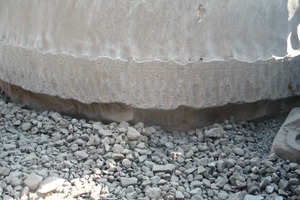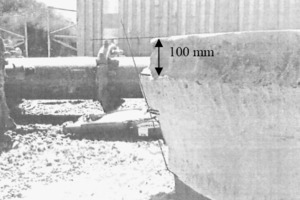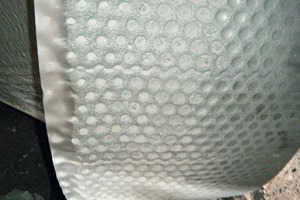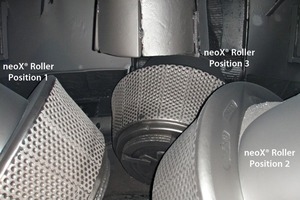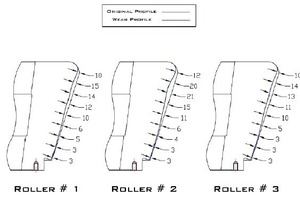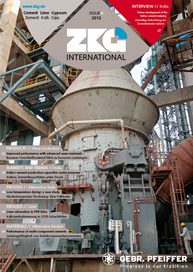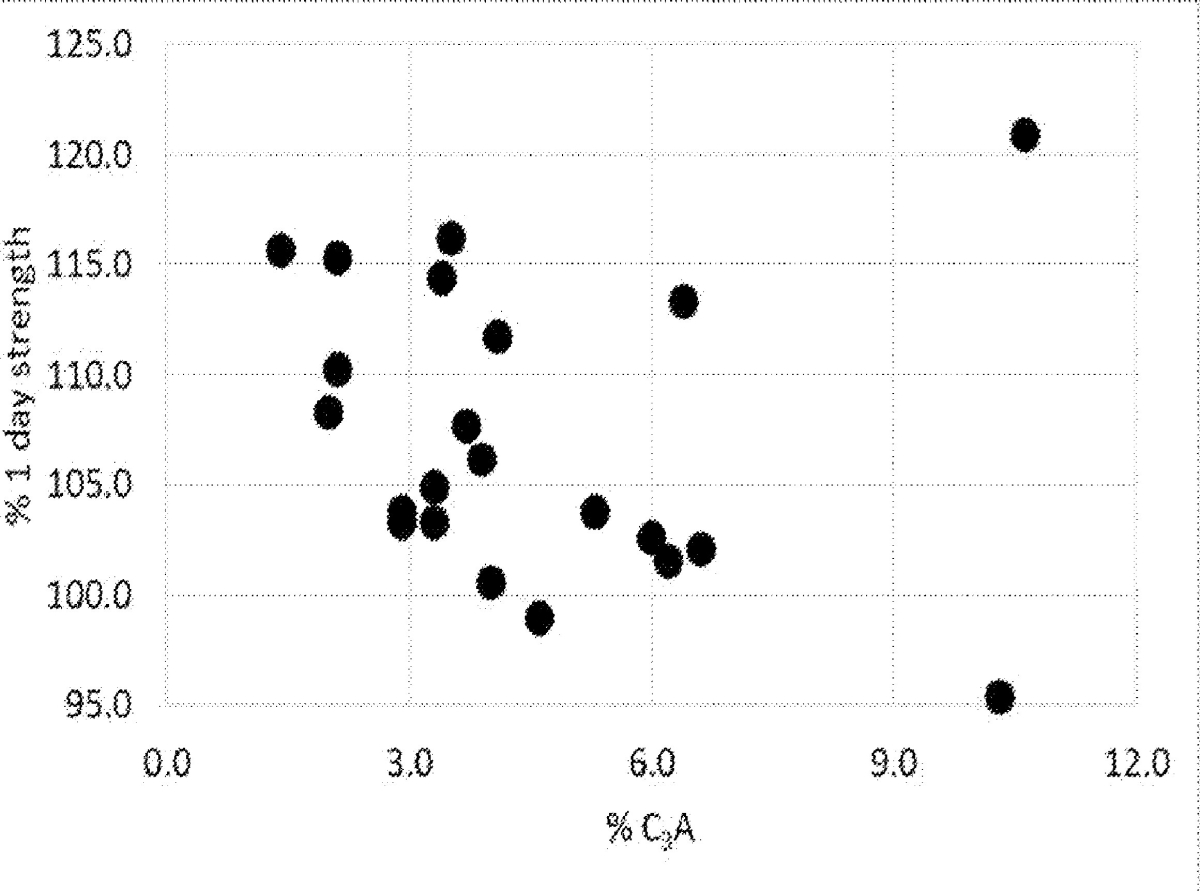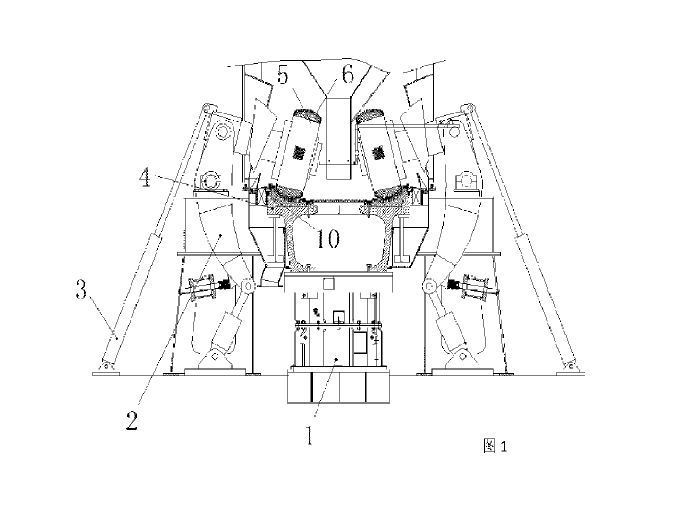Improved performance with advanced wear materials in vertical roller mills
The cement market in India is continuously growing. Rising demands lead to larger and larger plants. Often they are designed as single lines. Especially in those lines, downtimes of individual components play a crucial role. In turn, higher reliability and resistance of plant components directly improve their performance. At the end of the 1990’s, MMC (Metal Matrix Composite) concept has been invented and developed by Magotteaux to further improve the performance of wear parts in the grinding industry. Until then high chromium alloys were the standard supply for wear parts. MMC technologies can be applied to hammers, blowbars, anvils and impellers for VSI (Vertical Shaft Impactors) and also to grinding elements for vertical mills, i.e. rollers and tables. They are composed of high chromium alloy and granularized ceramic and are manufactured by means of a specialized casting process.
The combination of high chromium alloy and ceramic provides the reliability and resistance to breakage of cast alloys with the extreme wear resistance of ceramic, which is well in excess of the physical limitations of mono-metal high chromium alloys and high chromium hardfacing. Field experience over the last twelve years has demonstrated that MMC technologies are 3 to 5 times more resistant to wear than mono-metal high chromium alloys. They provide a longer lasting, more consistent, wear resistant grinding element that is crucial to grinding operation yielding longer operating campaigns, reduced maintenance, improved or maintained grinding efficiency due to a more consistent wear profile and a lower overall invested cost. Today Magotteaux has the ability to supply two types of MMC technlogies, i.e. Xwin® and neoX®.
Xwin®
Xwin® is the first patented generation of MMC and was launched at the end of the 1990’s. It has been supplied around the world to numerous vertical mill types and different industries, such as the cement industry, the power generation industry and the mineral processing industry.
Xwin® is characterized by a ceramic hardness of 2100 Vickers compared to 700-850 Vickers for high chromium alloys and high chromium hardfacing. Depending upon the vertical mill type, the overall lifetime improvement using Xwin® versus high chromium alloys or hardfacing material ranges from 2x to 3x or greater. It can be used for monobloc or segmented rollers and for monobloc or segmented tables.
Example: Xwin® application in a cement mill
Generally speaking in vertical mills grinding clinker the operation is mainly driven by the fineness of the finish product, meaning that the maximum allowable wear on the grinding rollers is 25-30 mm. If the wear becomes greater than 30 mm, the throughput of the mill usually needs to be reduced in order to keep the fineness of the finish product, thus reducing customer profitability. The below example shows a cement mill LM35.2+2 at Vassiliko Cement producing in average about 60 t/h. The rollers used to be supplied in high chromium alloy and were showing a wear velocity of 5-6 mm/1000 h before being re-welded from time to time with a Vautid 100 welding rod containing 28 % chromium. The maximum lifetime achieved with the high chromium rollers is about 5000 h, as maximum wear was reaching 25-30 mm. After hardfacing of the rollers, numerous small welding cracks were appearing, particularly on the edge of the rollers with the consequence that the next rebuilds had to start 10 cm from the edge (Figs. 1 and 2). The lifetime achieved with the hardfacing was in the same range of about 5000 h.
The primary goal to use Xwin® rollers was to increase the useful life compared to the high chromium rollers and allow for spot hardfacing once the ceramic is worn out in the high wear area. One added benefit is that no chipping is to be seen at the outer diameter of the Xwin® rollers. After almost 15 000 hours of service the first Xwin® roller is showing maximum 20 mm wear (Fig. 3) and is still in operation. At current wear speed (1.34 mm/1000 h in average) it should reach a final lifetime of more than 18 000 hours.
The extreme wear resistance of Xwin® will allow for a lifetime improvement of 3.7 times compared to the original high chromium alloy, thus demonstrating the cost effectiveness of Xwin® in cement applications.
neoX®
neoX® is the latest Magotteaux MMC technology. Its performance is a result of a new ceramic grain quality developed by Magotteaux and manufactured in-house in Belgium. The neoX® grains are about 50 % more wear resistant than the regular Xwin® grains, which allows to further improve the performance of the Xwin® parts. neoX® is applied in the same way than Xwin® and can be substituted without any new pattern development costs. neoX® is usually used in applications where the performance of Xwin® is not sufficient to achieve the forecast lifetime. It can be used for monobloc or segmented rollers and for monobloc or segmented tables.
Application in a coal mill CE803XRP
In the coal fired power industry the mill operation is mainly driven by the coal fineness to optimize combustion performance and minimize carbon carry-over (unburned carbon) and assisting to maintain environmental performance (particulate and NOx). Figure 4 shows a CE803XRP coal mill at NTPC Dadri equipped with one Xwin® roller and two neoX® rollers. This mill is grinding abrasive coal. The mill is rated for a production capacity of about 54 mt/h. After having achieved 40 % of the expected final lifetime (10 000 running hours), the two neoX® rollers appear to be minimum 40 % more wear resistant than the one Xwin® roller (Fig. 5, Tab. 1), thus allowing for minimum 4000 additional hours of runtime at same operating conditions.
Conclusions
Thanks to its MMC technologies, Magotteaux offers unique opportunities to maximize the vertical mills operating campaigns between rebuilds, while optimizing vertical mills performance, thus reducing costs and improving operations.
Xwin® is the primary solution to improve wear performance of grinding elements in vertical mills compared to the standard high chromium or hardfacing solutions, while neoX® will usually be used in high abrasive applications where the performance of Xwin® is not sufficient to achieve the forecast lifetime or where maximum lifetime needs to be reached.

